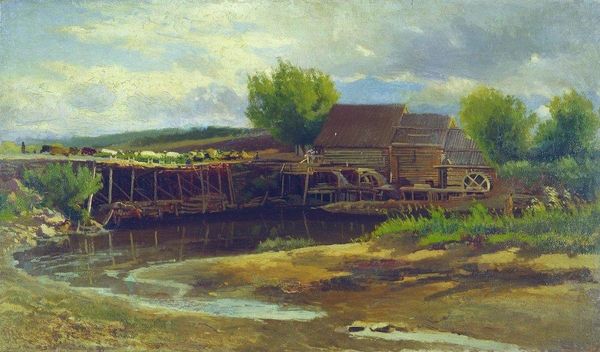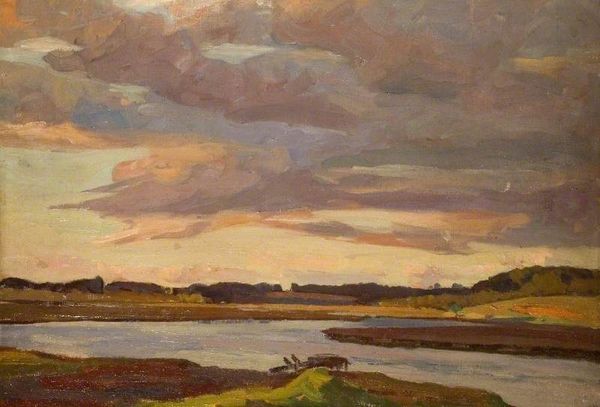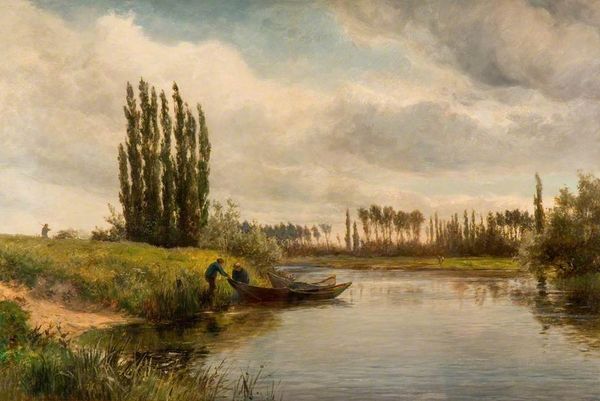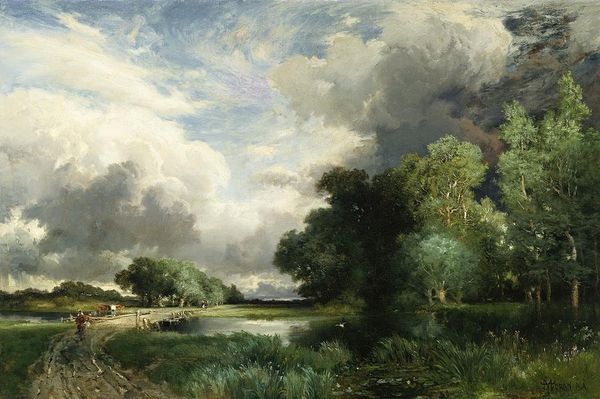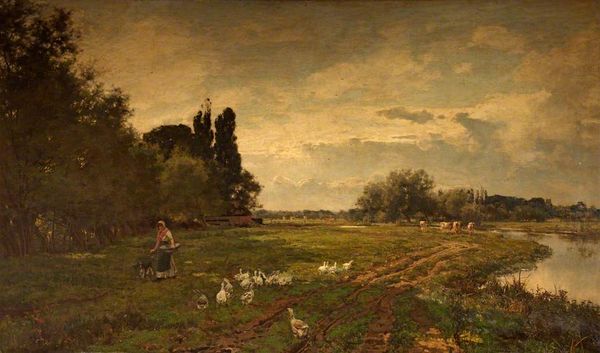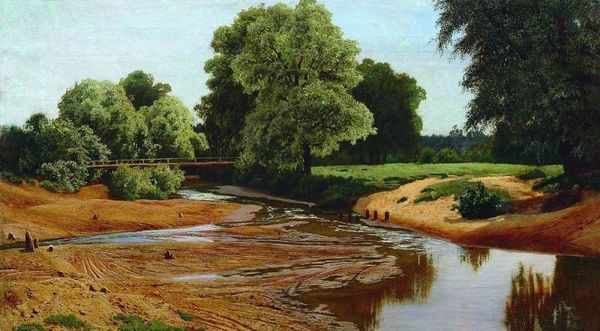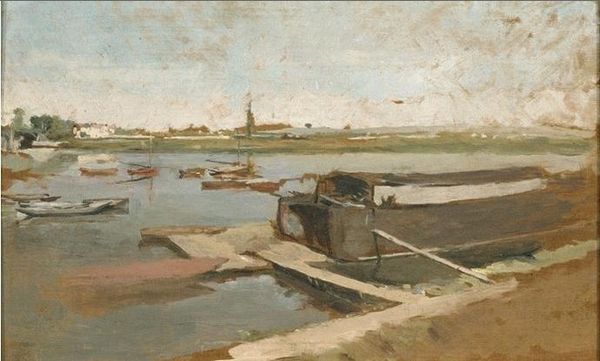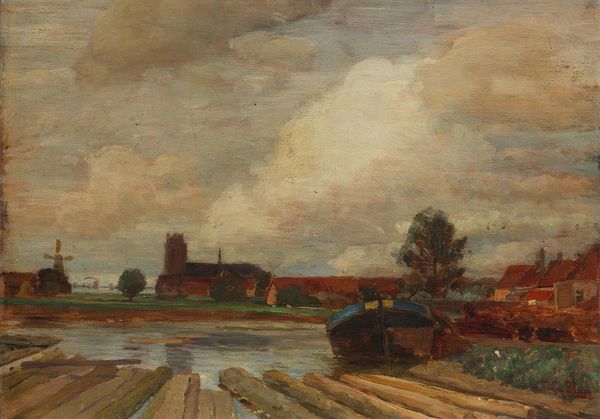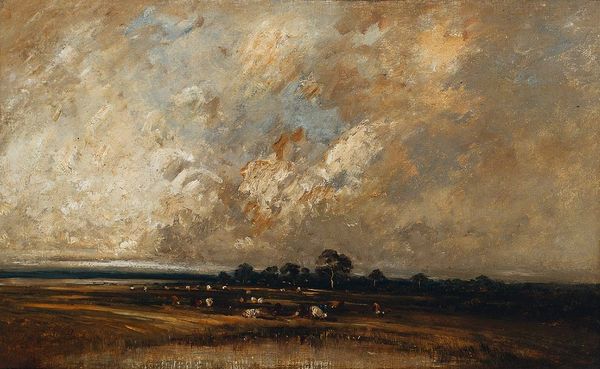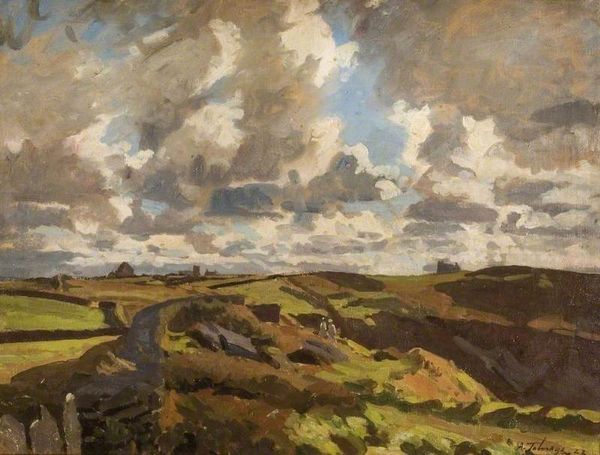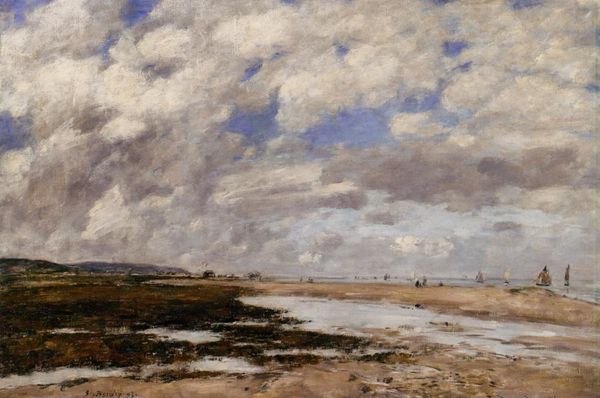
painting, oil-paint
#
painting
#
impressionism
#
oil-paint
#
landscape
#
charcoal drawing
#
impressionist landscape
#
oil painting
#
genre-painting
Copyright: Public domain
Curator: Ah, “Ringwood Bridge” by Algernon Talmage. There's such an immediacy in its depiction. Editor: It has a kind of quiet melancholy. The muted tones, the heavy sky… it speaks of a specific place and time, grounded in the labor needed to produce the bridge and the very paint itself. Curator: Precisely. Considering Talmage's positionality as a landscape painter, we can interpret the bridge as more than a simple crossing. Who is able to traverse this space? How does it facilitate or restrict movement for different social groups within the Ringwood area? Editor: Good point. You almost feel the presence of the workers who built the wooden structure. There’s a raw simplicity in the visible brushstrokes and material heft—nothing ornate, everything functional. It shows the marks of making. The composition feels centered around labor and landscape, blurring art with the work required for its creation. Curator: Yes, and perhaps consider the romanticism typically associated with landscapes of this era. Talmage subtly critiques this by refusing to idealize; he confronts the reality of labor intertwined with nature. Note also the absence of human figures – is that a commentary on labor exploitation, removing the visibility of the working class from idyllic scenes? Editor: That’s an insightful point. The emptiness creates a vacuum; our eye lingers on the textures, on how the bridge sits in its environment, shaped by hands and time, a bridge for practical use but presented as an artwork. The river reflecting the sky and wood is the perfect reminder that the natural and the manufactured co-exist. Curator: The artwork demands that we see beyond just pastoral beauty; it forces a confrontation with questions of access, power, and representation, and prompts deeper inquiries regarding who benefits from such views. Editor: Absolutely. Examining the materiality encourages considering art’s social function, a counterpoint to its aesthetic function. This has shaped how I read and think about landscapes forever. Curator: A critical lens lets us excavate the layers of meaning embedded in something seemingly so serene.
Comments
No comments
Be the first to comment and join the conversation on the ultimate creative platform.
